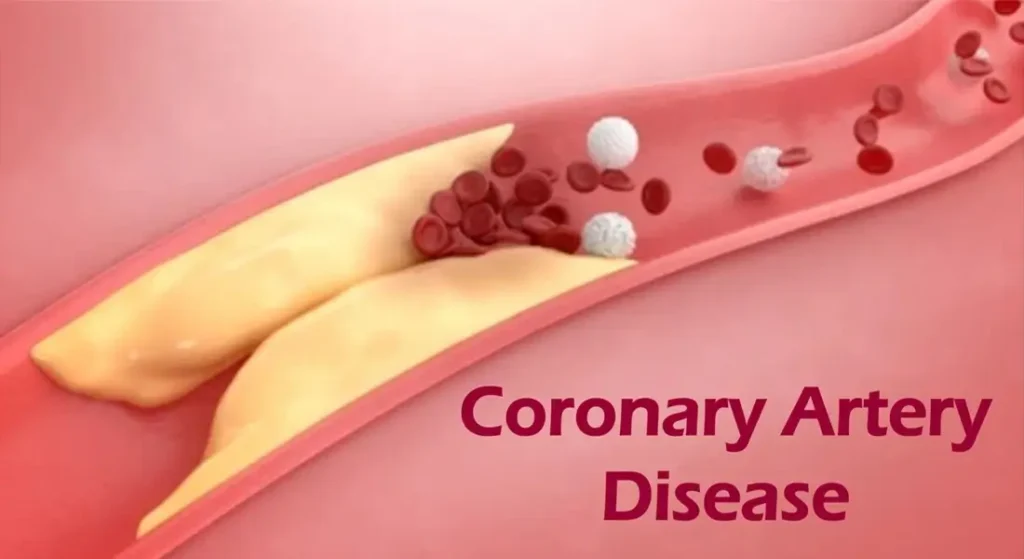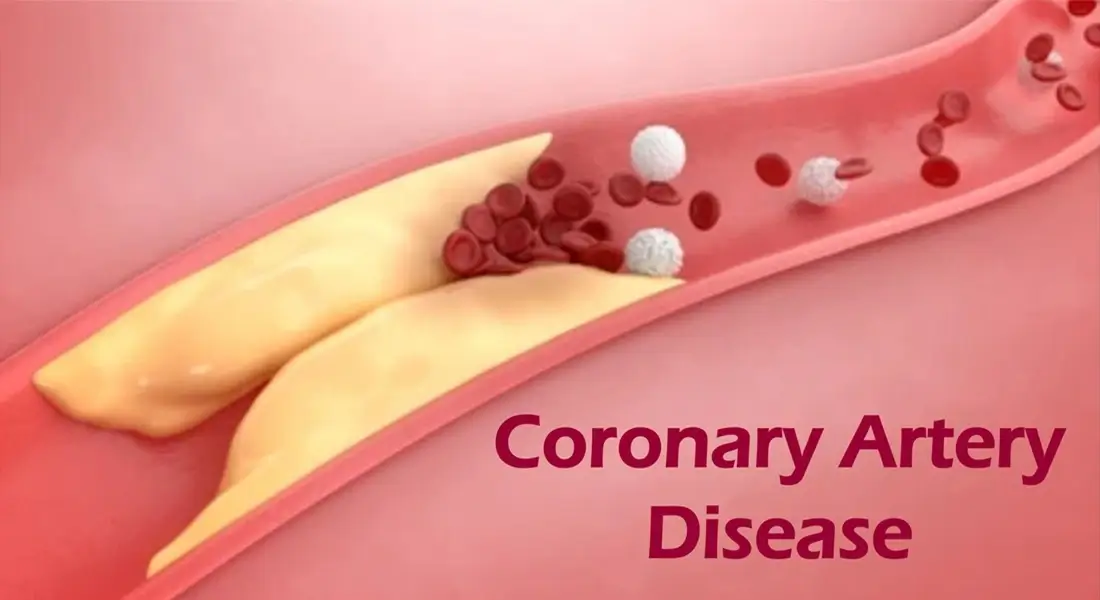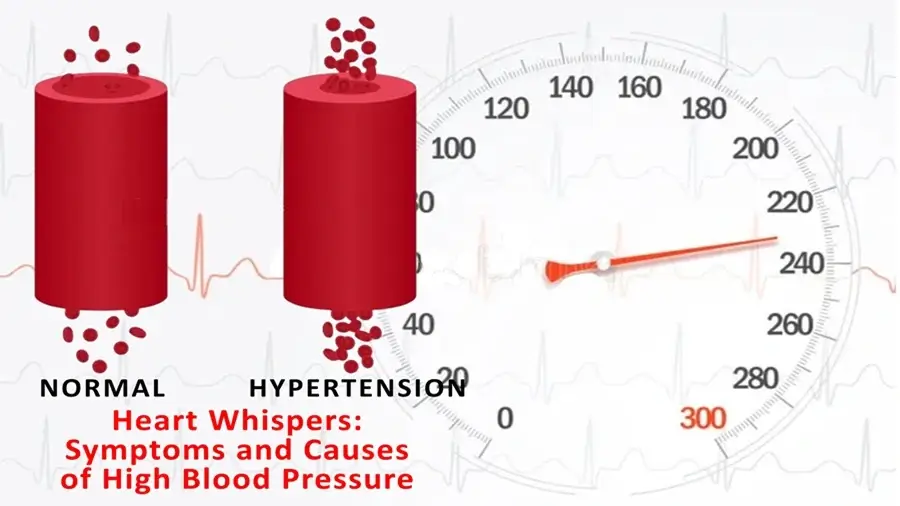
What is coronary artery disease (also known as ischemic heart disease or coronary heart disease)?
Coronary Artery Disease (CAD), also known as ischemic heart disease or coronary heart disease, is when the blood vessels carrying food and air to the heart get clogged. It happens because of things like eating too much unhealthy food, not moving around enough, and smoking. These bad habits make stuff build up in the heart’s arteries, making it harder for the heart to get what it needs.
If the arteries get too clogged, the heart might start hurting or, in severe cases, stop working. Some people might feel chest pain, while others might not feel anything. Managing CAD often involves lifestyle modifications, medications, and, in some cases, medical procedures to improve blood flow to the heart.
Regular medical check-ups and the adoption of heart-healthy habits play a crucial role in preventing and managing coronary artery disease. Additionally, visiting the doctor regularly is important to ensure our hearts stay healthy. Doctors assist by prescribing medicine and recommending healthy habits like eating good food and engaging in physical activity. Sometimes, they perform procedures to fix the arteries if they are severely blocked.
How is coronary artery disease linked to myocardial infarction?
Coronary Artery Disease (CAD) is a slow problem that happens in the tubes carrying blood to the heart. These tubes can get narrow because of things like fat and other stuff, making it hard for blood to reach the heart. This problem can lead to a sudden and serious issue called a heart attack or Myocardial Infarction (MI).
Here’s how it happens: Over time, the tubes get more and more narrow, and sometimes, a piece inside them can break. When this happens, a tiny clot can form, acting like a little dam that stops the blood from reaching the heart. When the heart doesn’t get enough blood, it can hurt a lot, and this is what we call a heart attack.
The seriousness of the heart attack depends on how much the blood flow is stopped. If the blood is blocked for a short time, it might not be too bad. But if it’s blocked for a long time, it can cause real damage to the heart.
So, keeping the tubes healthy is crucial to avoid this problem. Doctors can help by giving medicine, fixing the tubes if needed, and suggesting ways to stay healthy. It’s also important to visit the doctor regularly to catch any problems early. This way, we can keep our hearts happy and avoid heart attacks.
What is an acute coronary syndrome?
Acute Coronary Syndrome (ACS) happens when there’s a sudden problem with the heart. It happens because plaque breaks and forms a clot in the tubes that carry blood to the heart. This clot can stop the blood from reaching the heart, making it hurt a lot. There are two types of ACS – one where the heart hurts temporarily (unstable angina) and one where it hurts a lot and can cause more problems (heart attack or myocardial infarction). When someone has ACS, they might feel sudden and strong chest pain, have trouble breathing, feel sick, and sweat a lot.
Treatment involves medications to relieve symptoms, restore blood flow, and prevent complications. It’s important to get help right away by going to the doctor because ACS needs quick treatment to keep the heart healthy. Doctors can give medicine, do procedures to fix the blocked tubes, and suggest lifestyle changes to prevent it from happening again. If someone ever feels these symptoms, they shouldn’t wait and should get help fast.
What is the difference between “Coronary Artery Disease” and “Acute Coronary Syndrome”?
Coronary Artery Disease (CAD) and Acute Coronary Syndrome (ACS) are related to cardiovascular conditions, but they differ in their nature and presentation. ACS is considered a more severe and urgent manifestation of underlying CAD.
Coronary Artery Disease (CAD):
Coronary Artery Disease (CAD) is when the heart’s tubes (coronary arteries) slowly get clogged with stuff like cholesterol and fat. This happens over time, making the tubes narrow and hard. Sometimes, it can make the chest hurt during activities or not cause any symptoms at all. It happens because of unhealthy things we eat and other substances building up. It’s a slow process, and the heart learns to work with less blood over time. Unlike sudden heart problems, CAD needs long-term care and measures to keep the heart healthy.
Acute Coronary Syndrome (ACS):
Acute Coronary Syndrome (ACS) is like a sudden problem with the heart when it doesn’t get enough blood. It happens because of a clot in the tubes that carry blood to the heart. When this clot forms, it can make the heart hurt a lot, and the person might feel sick and sweaty. ACS can be an emergency and needs a doctor’s help right away to avoid serious problems. The doctor can check for chest pain, trouble breathing, and other signs to figure out what’s wrong. If not treated quickly, ACS can lead to more severe issues, so it’s important to get help fast.
How “coronary angioplasty” and “stent replacement” are related to each other?
Doctors often do two procedures, called coronary angioplasty and stent replacement, together. It is done to help treat a heart problem called coronary artery disease (CAD). The goal of these procedures is to make the blood flow better to the heart by fixing narrow or blocked arteries.
Here’s how they are connected:
Coronary Angioplasty:
- Nature of the Procedure: Coronary angioplasty is a simple way to widen narrowed or blocked coronary arteries.
- Procedure Steps: A catheter with a deflated balloon at its tip is inserted into the blocked artery. It is guided to the site of the blockage using X-ray imaging.
- Balloon Inflation: Once in position, the balloon is inflated, compressing the plaque or fatty deposits against the artery walls. It widens the passage for improved blood flow.
- Stent Placement: Sometimes doctors put a stent (a small, mesh-like tube) at the spot to keep the artery open. It prevents the artery from narrowing again and helps blood flow better in your heart.
Stent Replacement:
- Nature of the Procedure: Sometimes, doctors need to change or add new stents to help with issues like the artery getting narrow again, clot formation, or new blockages.
- Assessment: Before making this change, doctors check how the old stent is doing and see if there are any new problems.
- Procedure Steps: They use a thin tube called a catheter to put in new stents where they are needed, either changing the old one or fixing new blockages.
- Balloon Angioplasty: Sometimes, they might also use a balloon to widen the artery before putting in the new stent.
Connection:
- Doctors do a special procedure called coronary angioplasty first. They use a balloon to open a blocked artery.
- Doctors also put a tiny tube called a stent in the widened artery during angioplasty. This helps keep the artery open and supported.
- Sometimes, doctors need to replace the stent if it has problems later or if new blockages happen.
To sum up, doctors use a balloon to open a blocked artery in a procedure called coronary angioplasty. They also use stent replacement, which helps keep the passage open. These two procedures are often done together by doctors to make sure the heart gets enough blood.
Also Read:
What is the role of “coronary angioplasty” and “stent replacement” in treatments for coronary artery disease (CAD) and heart attacks (myocardial infarction)?
Doctors often use coronary angioplasty and stent replacement to treat coronary artery disease (CAD) and heart attacks (myocardial infarction). These interventions play crucial roles in restoring and improving blood flow to the heart muscle, easing symptoms, and preventing further complications.
Here’s how they contribute to the treatment process:
Coronary Angioplasty:
- Purpose: Coronary angioplasty is primarily performed to open narrowed or blocked coronary arteries.
- Mechanism: A catheter with a deflated balloon is guided to the site of the blockage. This balloon is inflated to compress the plaque or fatty deposits against the artery walls. The passage of the artery is thus widened.
- Role in CAD Treatment: In managing CAD, doctors often use angioplasty as a key intervention to address the underlying cause of reduced blood flow. This cause is often the accumulation of plaque in the arteries.
- Role in Heart Attacks: In the context of a heart attack, angioplasty is commonly used as an emergency procedure. It quickly restores blood flow to the affected part of the heart, minimizing damage to the heart muscle.
Stent Replacement:
- Purpose: In stent-replacement, doctors either replace an existing stent or deploy new stents. In both cases, the arteries are kept open preventing complications like restenosis.
- Mechanism: Stents, small mesh-like tubes, are placed at the site of the blockage. They provide structural support and keep the artery open. The stents can be plain metal or drug-eluting (coated with medication to reduce the risk of re-narrowing).
- Role in CAD Treatment: Stents are frequently used in conjunction with angioplasty to support the opened artery. They act as scaffolds to prevent the artery from collapsing and narrowing again.
- Role in Heart Attacks: Stents are commonly deployed during or after angioplasty in the context of a heart attack. They help maintain the patency of the coronary arteries. Also, they reduce the risk of future blockages and improve long-term outcomes.
Combined Role in CAD and Heart Attack Treatment:
- Emergency Treatment: In the case of a heart attack, doctors often urgently perform a combination of angioplasty and stent placement. It is done to restore blood flow and prevent further damage to the heart muscle.
- Long-Term Management: In patients with CAD, these procedures are part of a comprehensive treatment plan. They aim to relieve symptoms, prevent complications, and improve overall cardiovascular health.
In short, doctors use angioplasty and stent replacement to help with heart problems. They fix issues right away during emergencies and also find solutions for the long term to keep the heart healthy.



Pingback: Essential FAQs: Myocardial Infarction and Heart Attack Symptoms Simplified - Body Mysteries